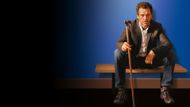Nearly two decades after it premiered on November 16, 2004, the medical drama House is still remembered for its inventive storytelling. In Season 1, Episode 21, Three Stories, the show’s lead, Dr. Gregory House (Hugh Laurie), serves as an unreliable narrator during a lecture on diagnostics.
The show weaves together three case histories only to reveal that the third “patient” was Dr. Greg, himself from five years earlier. This twist, essentially the origin story of Dr. Gregory's leg injury, was unique for a TV procedural and earned writer David Shore an Emmy and Humanitas Prize.
Critics praised the episode’s structure, calling its storytelling “twisty, smart and moving” and noting that it broke away from the series’ usual narrative form. In fact, Three Stories is widely regarded as the reason the show won a Peabody Award that year.

Also Read: Poker Face Season 2 Episode 9 recap: Charlie confronts her past while solving a twisted motel murder
Revisiting the trick in later episodes of House

After Three Stories set the template, the show returned to this storytelling trick. In later seasons, several key episodes use the skewed perspective or memory as a plot device. For example:
- House’s Head & Wilson’s Heart (Season 4 finale) – House is in a bus crash and wakes up with a concussion, unable to recall who on the bus will die. The episode (and its conclusion, “Wilson’s Heart”) plays out through its fragmented memories and hallucinations. Its cliffhanger structure and its warped point of view echo the Three Stories twist. This two-part story was submitted for five Emmys, and director Greg Yaitanes won for Outstanding Directing, highlighting how seriously the show took this narrative experiment.
- Baggage (Season 6) – In this episode, House recounts the events of the past week to a psychiatrist (guest star Andre Braugher). The case unfolds via flashbacks filtered through its perspective, rather than a straightforward procedural. One reviewer noted Baggage reminded them of Three Stories, with “flashbacks coming from an unreliable narrator”. Critics praised the change of pace; for example, an IGN reviewer called the episode’s switch in storytelling styles “well-done”.
Other episodes also toyed with reality and perception (for instance, the hallucination-heavy episodes “Euphoria I/II” or “Autopsy”), but the Season 1 and Season 4/6 examples above are the most direct callbacks to the Three Stories gambit.
Also Read: What happened to Rick in The Walking Dead? Character's fate explored

House still enjoys a following, and this narrative device remains part of its legacy. The unreliable-narrator approach that began in Three Stories became something of a signature for the series, resurfacing at crucial moments to keep viewers guessing. The show's greatest trick, the clever misdirection of its hero, started with that one groundbreaking episode and was deliberately repeated in later story arcs.
Also Read: Connie Britton cast in recurring role in Steve Carell’s upcoming HBO comedy series
